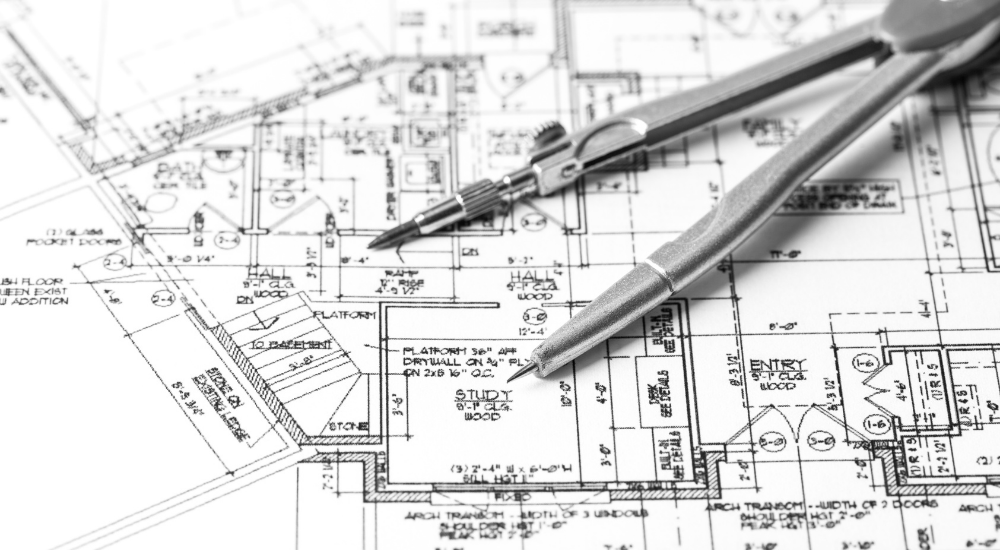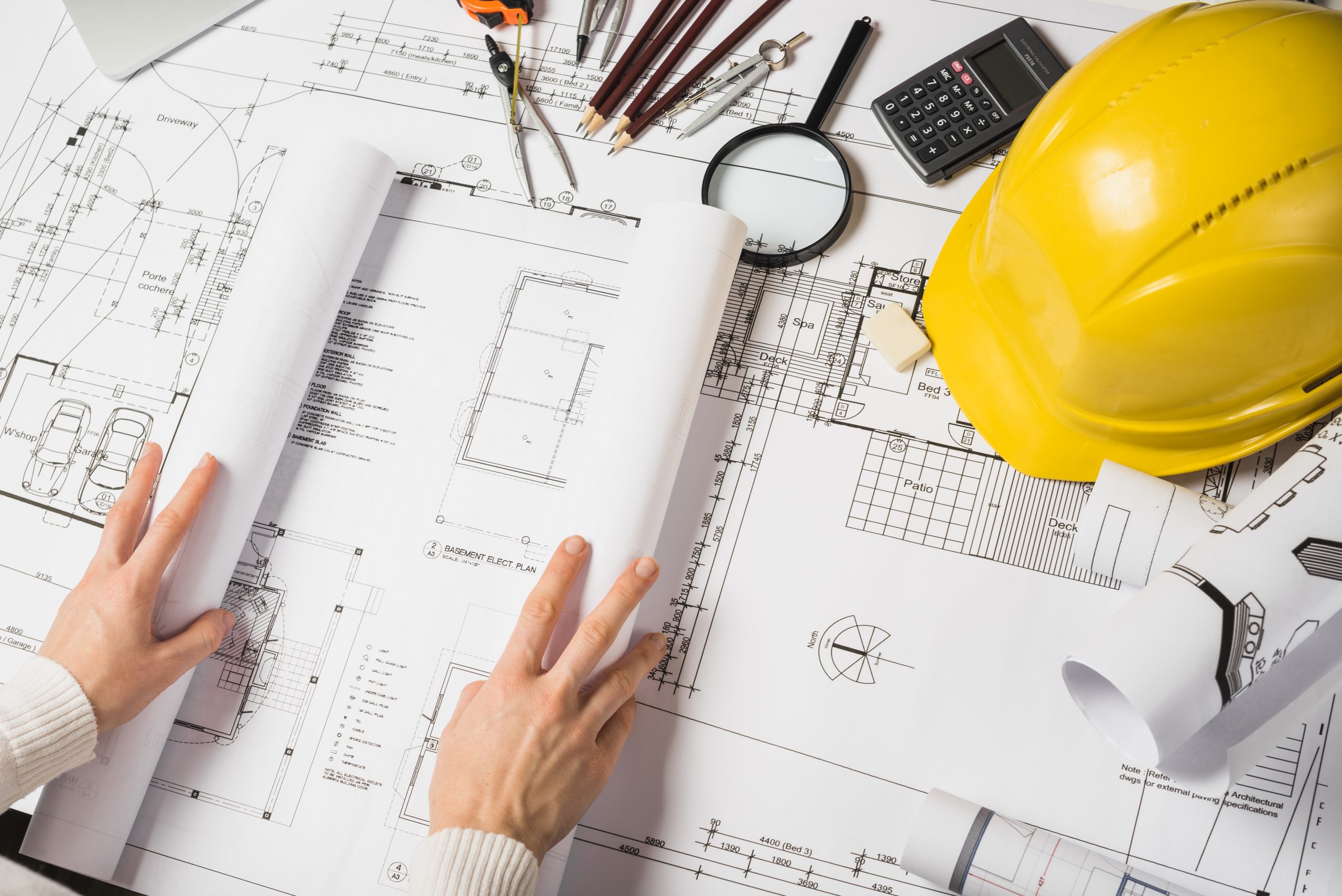Architect Insights on Combining Form and Function
Architect Insights on Combining Form and Function
Blog Article
Comprehending the Diverse Profession Paths Available for Aspiring Architect
As an ambitious Architect, you have a world of profession paths awaiting you. Each path provides unique difficulties and chances to apply your creativity and technological knowledge. Whether you're attracted to standard design or the subtleties of lasting style, there's a particular niche that lines up with your interests. Comprehending these diverse options can form your specialist journey, however which direction will you pick to explore initially?
Typical Architecture: Creating Structures and structures
Typical style concentrates on creating structures and structures that mix capability with aesthetic charm. Your designs can mirror cultural heritage, showcasing regional practices while satisfying modern-day requirements.
You'll develop skills in composing, model-making, and website evaluation, allowing you to imagine and interact your concepts successfully. Involving with clients, you'll need to comprehend their vision and equate it into viable layouts.
Moreover, developing codes and sustainability practices are crucial in your work, guaranteeing your frameworks are environmentally friendly and risk-free. As you grow in your career, you'll locate chances in residential, commercial, or perhaps repair tasks, each offering distinct difficulties. Embracing conventional style leads the way for a meeting occupation that pays tribute to the past while shaping the future.
Urban Planning: Shaping Areas and Public Spaces
As a hopeful Architect, you can play a crucial duty as a metropolitan coordinator, transforming exactly how areas operate and communicate. By employing area involvement strategies, you'll guarantee that citizens have a voice fit their environment. And also, incorporating sustainable layout principles will certainly help develop rooms that not only fulfill today's requirements however additionally secure the future.
Role of Urban Planners
While several might consider designers as the single visionaries behind structures, urban planners play a necessary duty fit the wider landscape of areas and public spaces. They assess land usage, zoning regulations, and area needs to create sustainable environments that boost lifestyle. By teaming up with various stakeholders, you'll help develop parks, transportation systems, and household locations that advertise social interaction and access. Urban organizers also concentrate on ecological considerations, making sure that growths integrate environment-friendly spaces and assistance biodiversity. Your experience in spatial design and neighborhood characteristics enables you to imagine future development while preserving social heritage. In this crucial role, you'll directly influence how individuals experience their surroundings, making every task an opportunity for positive change.
Neighborhood Involvement Methods
Reliable area engagement methods are crucial for metropolitan organizers to guarantee that the voices of locals are heard and valued in the planning process. To foster meaningful discussion, you need to prioritize open forums and workshops where area members can share their ideas and issues. Usage surveys and social media to get to a more comprehensive audience, making sure varied point of views are consisted of. Teaming up with regional organizations can enhance trust and promote much deeper links. It is essential to supply clear information regarding proposed projects and decision-making procedures, permitting homeowners to really feel informed and empowered. By actively incorporating and paying attention feedback, you'll produce spaces that reflect the neighborhood's needs, ultimately leading to more lasting and successful urban environments. Accept openness and continual discussion for long-term influence.
Lasting Style Principles
When making metropolitan rooms, including lasting layout concepts is critical for creating settings that prosper both ecologically and socially. Think about integrating green rooms, like yards and parks, to enhance biodiversity and improve air high quality.
Designing with water conservation in mind is additionally vital-- think of rainfall gardens and absorptive surface areas to handle stormwater. Including community members during the planning procedure assurances that the rooms you develop meet their requirements and urge social interaction. By welcoming these concepts, you'll add to dynamic, sustainable metropolitan landscapes that profit every person.

Landscape Architecture: Developing Lasting Exterior Environments
As you check out landscape design, you'll find crucial style concepts that create useful and lovely outdoor rooms. Lasting techniques play an essential function in guaranteeing these settings grow while reducing environmental influence. And also, you'll discover a variety of job chances that enable you to make an actual difference in just how people connect with nature.
Layout Principles in Landscape
Comprehending style concepts in landscape design is important for developing sustainable outdoor settings that harmonize with nature. You'll need to ponder elements like balance, proportion, and range to assure your layouts really feel natural and welcoming. Integrating indigenous plants not only improves biodiversity but additionally reduces water use, making your landscape durable. Consider the flow of area and exactly how individuals interact with it; paths and seating areas should invite exploration and leisure. Furthermore, take notice of seasonal adjustments, designing with materials that match the environments year-round (Architect). By focusing on sustainability and aesthetic appeals, you can produce exterior rooms that improve the community and promote well-being. Accepting these concepts will certainly establish a solid structure for your occupation in landscape design.
Sustainable Practices Overview
Lasting techniques in landscape style not only concentrate on appearances yet also focus on environmental health and wellness and source preservation. By integrating indigenous plants, you enhance biodiversity and lower the need for chemical plant foods and pesticides. Executing reliable irrigation systems assists conserve water and minimizes drainage, safeguarding neighboring communities. You can design spaces that advertise soil wellness, such as exercising and making use of natural products permaculture concepts. Furthermore, incorporating green facilities, like rainfall gardens and permeable pavements, help in stormwater administration and decreases metropolitan use this link warm. You add to a much healthier planet and provide areas that promote area link when you create outside atmospheres with sustainability in mind. Eventually, these practices assure your styles profit both individuals and the setting for many years ahead.
Career Opportunities Expedition
With a solid structure in lasting techniques, landscape style offers a variety of occupation courses that permit you to make a meaningful influence on the setting. Urban organizers commonly collaborate with landscape architects to develop environment-friendly areas in urban setups, boosting city livability. If you're passionate concerning education, take into consideration coming to be a landscape design teacher, inspiring future generations.
Sustainable Design: Concentrating On Eco-Friendly Practices
As you explore your profession in architecture, embracing eco-friendly methods can set you apart in an affordable area. Sustainable design focuses on creating structures that decrease ecological influence while improving occupant wellness. By incorporating eco-friendly materials, energy-efficient systems, and lasting structure techniques, you'll add to a greener future.
Begin by obtaining expertise of eco-friendly certifications like LEED or BREEAM, which can bolster your credentials. Think about exactly how all-natural light, ventilation, and thermal efficiency can optimize style. Collaborate with designers and environmental professionals to innovate solutions that decrease waste and preserve resources.
Do not forget the relevance of area involvement-- appealing regional stakeholders can influence styles that harmonize with the atmosphere. As clients significantly focus on sustainability, your experience in environmentally friendly methods will certainly not only bring in tasks but also accomplish your passion for accountable architecture. Accept this vital aspect of the occupation, and view your job thrive.
Historic Conservation: Protecting and Restoring Cultural Heritage
While you start on your building journey, think about the important duty of historic conservation in preserving our cultural heritage. This field concentrates on the protection and remediation of significant structures, sites, and structures that inform the tales of our past. By engaging in historical preservation, you'll aid safeguard the building tradition that shapes area identity.
As a historic conservation Architect, you'll examine historical significance and assess the problem of structures. You'll function closely with conservationists and chroniclers to guarantee authentic repair methods are utilized. This job path permits you to blend creative thinking with research, enabling you to develop options that respect original products and craftsmanship.
Your work not only contributes to sustainability by reusing existing buildings yet also promotes a sense of pride within areas. Embracing this path will certainly assist you become a guardian of background, protecting the stories and aesthetics that enhance our lives.
Interior Architecture: Enhancing Indoor Spaces
Historical preservation and indoor design both share a dedication to enhancing the built environment, however they concentrate on various aspects. While historic preservation highlights maintaining a framework's cultural and historical worth, indoor design absolutely nos in on maximizing interior areas for performance and looks.
As an aspiring Architect, you'll locate that interior design my link enables you to blend creative thinking with technological skills. You'll develop areas that not only look great however likewise promote comfort and efficiency. This field entails understanding exactly how light, color, and materials interact within a room, influencing state of mind and use.
You'll function on different jobs, from household homes to commercial workplaces, making certain that each atmosphere satisfies the needs of its residents. By focusing on individual experience, you can transform interiors right into inspiring and functional spaces, making a considerable effect on just how people interact with their environments. Accept the possibility to improve indoor settings and shape the way people live and work.
Industrial Design: Combining Performance With Aesthetics
Commercial style plays a necessary duty in developing products that seamlessly mix aesthetic appeals with performance, guaranteeing that what you utilize daily is not just aesthetically attractive yet additionally functional. As an aspiring Architect, you can immerse on your own in this field, focusing on making everything from furnishings to customer electronics. Your job involves comprehending customer requirements, materials, and producing procedures, permitting you to create ingenious options that enhance day-to-day experiences.
In commercial layout, you'll often work together with online marketers, suppliers, and designers, ensuring that your designs are not only lovely yet additionally feasible. You'll learn to stabilize form and feature, focusing on functionality without compromising style. By developing your abilities in laying out, 3D modeling, and prototyping, you'll be well-equipped to bring your concepts to life. This career course supplies a dynamic environment where creativity meets practicality, making it a rewarding choice for architects interested in forming the items of tomorrow.
Frequently Asked Questions
What Educational Qualifications Do I Need to Come To Be a Designer?
To become an engineer, you'll require an expert level in architecture, usually a Bachelor's or Master's. Additionally, you'll have to finish a teaching fellowship and pass the Architect Registration Evaluation to exercise legally.
Are There Accreditation Needs for Various Building Occupation Paths?
Yes, there're qualification requirements for different building courses. Architect. You'll need to pass exams, total teaching fellowships, and occasionally go after specialized training, relying on your chosen focus, like landscape architecture, city layout, or historic preservation
What Software Skills Are Necessary for Designers Today?

How Can I Gain Practical Experience While Researching Style?
You can get sensible experience by interning at building firms, taking part in layout competitors, volunteering for community projects, or teaming up with classmates on real-world assignments. These possibilities improve your abilities and develop valuable links in the industry.
What Work Opportunities Exist Outside Conventional Architecture Firms?
You can discover various work chances outside typical style firms, like urban preparation, interior decoration, landscape architecture, building and construction monitoring, realty development, and even roles in sustainability consulting. Each offers one-of-a-kind obstacles and benefits.
Whether you're attracted to conventional you could try here style or the subtleties of sustainable layout, there's a niche that lines up with your rate of interests.When designing urban areas, integrating sustainable style concepts is important for developing environments that prosper both environmentally and socially.As you discover landscape architecture, you'll find important style principles that develop practical and attractive outdoor spaces.Comprehending layout concepts in landscape architecture is vital for producing lasting exterior settings that integrate with nature.In industrial design, you'll typically work together with manufacturers, marketing experts, and designers, making certain that your layouts are not just stunning however likewise practical.
Report this page